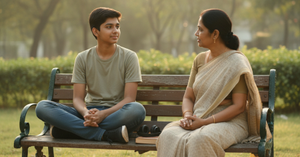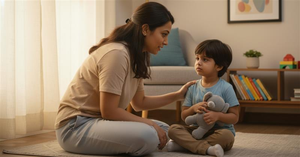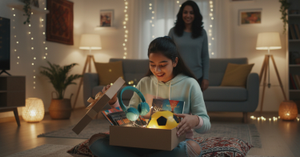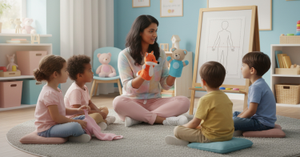Burn injuries are a common yet serious risk for children, often occurring in the kitchen, bathroom, or during outdoor activities. According to health experts, burns can cause severe pain, scarring, and long-term complications if not treated properly. Understanding the different degrees of burns, knowing when to seek medical help, and implementing preventive measures can protect children from severe injuries.
Different Degrees of Burns in Children
Burns are classified into three primary degrees based on their severity. Identifying the type of burn helps determine the best treatment approach.
1. First-Degree Burns (Superficial Burns)
• Affects only the outer layer of the skin (epidermis).
• Symptoms include redness, mild swelling, tenderness, and a dry surface.
Common causes:
• Brief contact with hot surfaces (e.g., a hot pan).
• Mild sunburn.
• Short exposure to steam or hot water.
• Healing time: Usually within 3 to 7 days without scarring.
2. Second-Degree Burns (Partial-Thickness Burns)
• Affects both the outer (epidermis) and inner (dermis) skin layers.
• Symptoms include redness, blisters, intense pain, and moist skin.
Common causes:
• Hot liquid spills (e.g., boiling water, tea, or coffee).
• Prolonged contact with hot objects.
• Direct exposure to flames.
• Healing time: Can take 2 to 3 weeks, with a risk of scarring if not properly treated.
3. Third-Degree Burns (Full-Thickness Burns)
• Affects all skin layers, including nerves, tissues, and sometimes bones.
• Symptoms include charred, leathery, or white skin. Due to nerve damage, there may be little or no pain initially.
Common causes:
• Direct fire exposure.
• Electrical burns.
• Chemical burns from strong acids or alkalis.
• Healing time: Requires immediate medical care, often involving skin grafts and long-term treatment.
Which Burns Can Be Treated at Home?
Some minor burns can be managed at home with first aid, while others require medical attention.
First-degree burns:
• Run cool (not ice-cold) water over the affected area for 10 minutes.
• Apply aloe vera gel or a mild moisturizer to soothe the skin.
• Use over-the-counter pain relievers like acetaminophen or ibuprofen if necessary.
• Keep the area clean and avoid exposing it to direct sunlight.
Small second-degree burns (less than 2 inches in diameter):
• Cool the burn immediately with running water.
• Cover with a sterile, non-stick bandage to prevent infection.
• Do not pop blisters; allow them to heal naturally.
• Apply an antibiotic ointment to prevent infection.
When to Seek Medical Help?
Some burns require professional medical care. Visit a doctor if:
• Second-degree burns
• The burn is larger than 2 inches.
• It affects the face, hands, feet, joints, or genitals.
• Signs of infection appear, such as pus, increasing redness, or fever.
• Third-degree burns
• Immediate emergency care is required. Call 911 or go to a hospital.
• Cover the burn with a sterile, non-stick dressing, and do not apply ointments.
• Chemical or electrical burns
• Even if they appear mild, internal damage may have occurred. Seek emergency care.
• Smoke inhalation injuries
• If the child has difficulty breathing, coughing, or soot around the nose or mouth, seek medical help immediately.
Most Severe Burns and Emergency Actions
Large third-degree burns or burns covering more than 10% of the body:
• Immediate hospitalization is necessary.
• Avoid removing clothing stuck to the burn. Cover the area with a clean, dry cloth.
Chemical burns:
• Rinse the affected area with cool water for at least 20 minutes.
• Remove any contaminated clothing and seek emergency care.
Electrical burns:
• Turn off the power source before touching the child.
• Seek immediate medical attention, as internal injuries may not be visible.
Tips to Prevent Burn Injuries in Children
Prevention is key when it comes to protecting children from burns. Implement these safety measures to reduce the risk of burn accidents.
Kitchen Safety
• Keep hot food and liquids out of children’s reach.
• Turn pot and pan handles inward to prevent accidental spills.
• Use back burners when cooking to keep hot surfaces away from children.
• Never leave cooking unattended, especially with young children nearby.
• Install stove guards to prevent accidental contact with burners.
Bathroom Safety
• Set the water heater temperature to a maximum of 120°F (49°C).
• Always check bath water temperature before placing a child in the tub.
• Keep curling irons, straighteners, and hairdryers unplugged and out of reach.
Fire and Electrical Safety
• Install smoke detectors in the kitchen, bedrooms, and hallways.
• Keep fire extinguishers accessible and learn how to use them.
• Teach children never to play with matches, lighters, or candles.
• Cover unused electrical outlets and keep cords out of reach.
• Never leave children unattended near space heaters, fireplaces, or open flames.
Clothing and Outdoor Safety
• Dress children in flame-resistant sleepwear.
• Supervise children around campfires, barbecues, and fireworks.
• Keep hot drinks away from young children to prevent accidental spills.
What to Do in Case of a Burn Injury?
If a burn occurs, follow these first-aid steps:
• Cool the burn immediately with running cool water for at least 10 minutes.
• Remove tight clothing or jewelry from the affected area before swelling starts.
• Cover the burn with a clean, sterile dressing to prevent infection.
• Avoid home remedies like butter, toothpaste, or ice, as they can worsen the burn.
• Give pain relief with an age-appropriate over-the-counter medication if needed.
• Monitor for infection and seek medical help for severe burns.
Conclusion
Burn injuries in children can be severe, but many can be prevented with proper safety measures. By understanding the different degrees of burns, knowing when to seek medical care, and implementing household safety precautions, parents can significantly reduce the risk of burn-related injuries. In case of a burn, quick and appropriate first aid can make a crucial difference in recovery. Stay informed, stay prepared, and keep your children safe from burn hazards.








Be the first one to comment on this story.